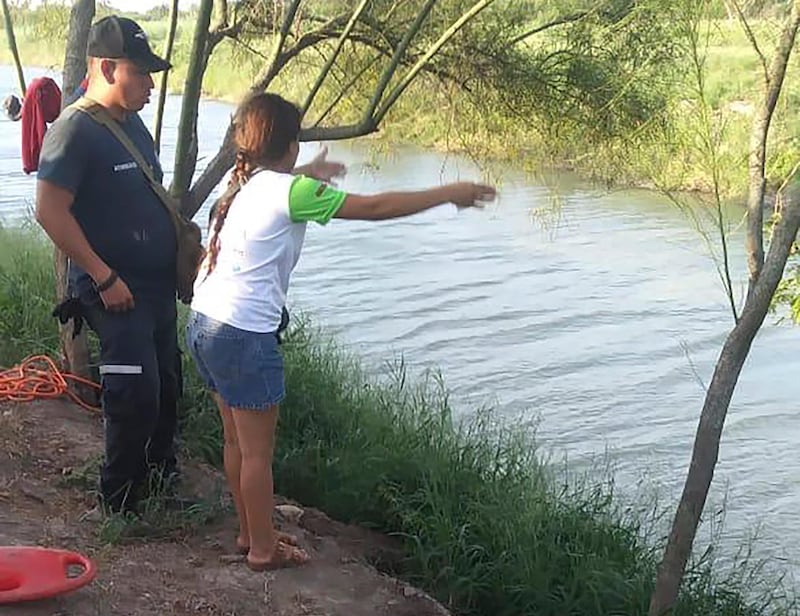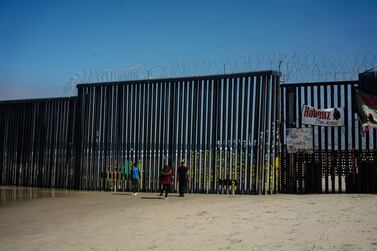The haunting picture of a man and his 23-month-old daughter lying face down in shallow water along the bank of the Rio Grande has highlighted the human toll of the crisis at the US-Mexico border.
Oscar Alberto Martinez and Angie Valeria from El Salvador drowned on Sunday as they tried to swim into the US.
His black shirt is pulled over his chest and the toddler’s head is tucked inside, her arm draped around his neck, suggesting she clung to him in her final moments.
For months, advocates have been warning that deaths at the border would increase as migrants are forced to cross in more dangerous areas by US policies that make it harder for asylum seekers to turn themselves in at ports of entry.
Martinez, frustrated because his family was unable to request asylum from US authorities, tried to swim across the river with his daughter, Mexican newspaper La Jornada reported.
He set her on the US bank of the river and turned back for his wife, Tania Avalos, but the toddler threw herself back into the water.
Martinez returned and was able to grab Valeria, but the current swept them both away.
Ms Avalos was left to witness the tragedy and report its details to police.
The photo evokes memories of Aylan Kurdi, the 3-year-old Syrian boy whose body washed up on a beach in Turkey, highlighting the human cost of the European migrant crisis.
The 2015 image of the drowned toddler lying in the sand continues to stir discussion over policies toward migrants.
In Washington, politicians opposed to the administration’s harsh border policies said they hoped the disturbing image would make a difference.
Representative Joaquin Castro, a Democrat from Texas and the chairman of the Congressional Hispanic Caucus, was emotional as he discussed the photograph.
He said he hoped it would make a difference among politicians and the US public.
"It's very hard to see that photograph," Mr Castro told The New York Times.
“It’s our version of the Syrian photograph – of the 3-year-old boy on the beach, dead. That’s what it is.’’
Two babies, a toddler and a woman were found dead on Sunday, overcome by the sweltering heat.
Three children and an adult from Honduras died in April after their raft capsized on the Rio Grande, and a child, 6, from India was found dead this month in Arizona, where the temperature often soars well above 38°C.
The US has also been expanding its programme under which asylum seekers wait in Mexico while their claims are processed in American courts, in a wait that could last many months or even years.
Many migrant shelters are overflowing on the Mexican side. Cartels hold sway over much of Tamaulipas and have been known to kidnap and kill migrants.
“It’s a horrifying image,” Maureen Meyer, a specialist on immigration at the Washington office on Latin America, which advocates for human rights in the region, told AP.
“And I think it speaks so clearly to the real risks of these US programmes that are either returning people back to Mexico seeking asylum or, in this case, limiting how many people can enter the US every day.”
Meanwhile, Mexico is stepping up its crackdown on immigration, with much of the focus on slowing the flow in the country’s south.
“With greater crackdowns and restrictions we could see more desperate measures by people trying to enter Mexico or the US,” said Cris Ramon, senior immigration policy analyst at the Bipartisan Policy Centre in Washington.







